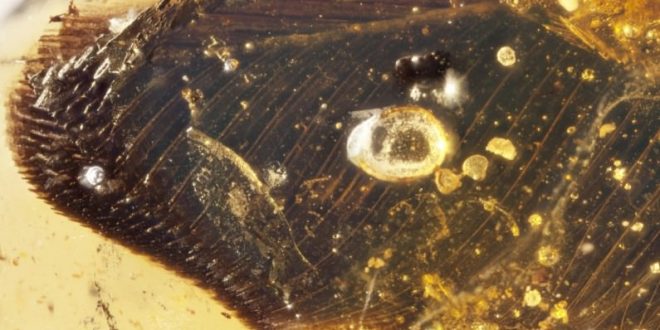About 99 million years ago, a hummingbird-size bird likely fought for its life after getting stuck in a glob of tree resin, but it couldn’t tear itself away and eventually died, leaving its feathers to mummify in what became a lump of amber, a new study finds.
Published in the journal Nature Communications, an analysis in the new report revealed the wings probably belongs to enantiornithes, a collection of avian dinosaurs that went extinct at the conclusion of the Cretaceous period.
Typically, our knowledge of Cretaceous feathers comes from imprints in carbonized compression fossils, which don’t offer much information on color or fine detail. On the other hand, amber fossils usually only contain fragments that don’t reveal which animal they came from.
Unprecedented view of ancient wing structure
Weighing only .06 and .3 ounces, the fossilized wings include bone, feathers and soft tissue. They are the first Cretaceous plumage specimens to be analyzed that are not just isolated feathers, the study team said.
An X-ray micro-CT evaluation showed both specimens seemed to belong to juveniles, according to bone size and development. Commonalities in bone structure and size, in addition to some plumage qualities, show that they may be members of the same species.
The study team said both samples had skin, muscle, claws, and feather shafts, as well as rows of flight feathers, secondary feathers, and covert feathers. All are comparable in layout and structure to modern birds.
While the feathers seemed black to the naked eye, microscopic imagery showed the flight feathers were mainly dark brown, while the covert feathers varied from a somewhat paler brown, to silver or white bands.
Rather than excavated the specimens from the ground, the study team actually acquired the fossilized wings from well-known amber market in Myitkyina, a large city in Myanmar. With most Burmese amber is used in jewelry and carvings, fossilized inclusions like insects and pollen are regarded as impurities that lessen the value of the finished piece. The fossils could be partially or totally demolished through polishing.
When the scientists examined the fossil, they detected truncated wing surfaces on the amber exterior indicating it had been cracked off of a bigger amber inclusion that may have initially held the entire early bird specimen.
Agencies/Canadajournal
 Canada Journal – News of the World Articles and videos to bring you the biggest Canadian news stories from across the country every day
Canada Journal – News of the World Articles and videos to bring you the biggest Canadian news stories from across the country every day



